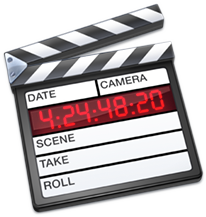"Films need to seduce their audience into long term commitments. While there are many types of seduction, the temptation to go for instant arousal is almost irresistible" - T. Sutcliffe.
In other words, the opening should suck audience into the movie rapidly, as soon as they start to watch the movie. Sometimes, the idea of something BIG is used, to create a spactecular opening for example in Cassino- the character gets into his car, then the car explodes.
 |
| Robert De Rino walks toward the car and gets into it.... |
 |
| ....and then the car explodes... |
However, the risk of 'instant arousal' is that the movie MUST keep the audience interested, and the level must not go down, which is very easy with big opening. Where we have something big straight at the begining, audiences expectactions become very high. Therefore many films could get boring.
While watching the opening, audience starts to make immidiate adjustents about what might happen next. I think that good opening should set the tone of the movie, and get audience ready for what's coming, set them in the right feeling. Hitchcock 's words: "We should give some informaton to the audience, so they know something but not everything". And I agree, and this this is part of what makes a good movie opening.
A classic opening, is where a movie starts with an establishing shot and they gets into the movie. Stanley Kuffman gave a good example: establishing shot of New York, then close up of a window, receptionist/office and then actor and that's when the movie starts.

Title sequence to SEVEN is really effective in many ways, first of all it 'sucks audience in' straight away. We don't fully know what's the movie about, however we might gets something from what we see. SO: we are being set in a right tone, mood/feeling to wake us up and get ready for the movie and for what's coming. All that we see links to the movie, to wee get like a good introduction, a welcoming to the movie and this is what makes us want to continue to watch the movie.
About 60 years ago, Orson Wellers wanted to go straight into the movie in his A Touch of Evil, instead of having titles and big openings, however Universal Studios said this is a bad idea because it may not attract audience and keep them interested, so they didn't want to make a change.
A "favourite trick of Film Noir" is where the begining of the movie is the end really, so the movie starts with the actual ending. Many movies use film noir and break the rules of simple narrative, such as Memento and State of Enemy. This technique may be usually used in psychological thrillers, I think it works best then.
The opening to the movie The Shining creates suspense, the use of helicopter view shots makes it look like the preditor, we can see a lot of land but the focus is on one object- the car. This tells us that these people are travelling in a wrong direction and are being watched.
 There were 31 suspense movies released in the year 2009, and altogether throughout the whole of the year 527 films were released! Action, animation and comedy are really popular genres, the UK Box office accounted for 52% of these genres in 2009. These genres are targeting both female and male audiences. people even at an older age like to go and watch animation, or they go along with younger siblings.
There were 31 suspense movies released in the year 2009, and altogether throughout the whole of the year 527 films were released! Action, animation and comedy are really popular genres, the UK Box office accounted for 52% of these genres in 2009. These genres are targeting both female and male audiences. people even at an older age like to go and watch animation, or they go along with younger siblings. 








































